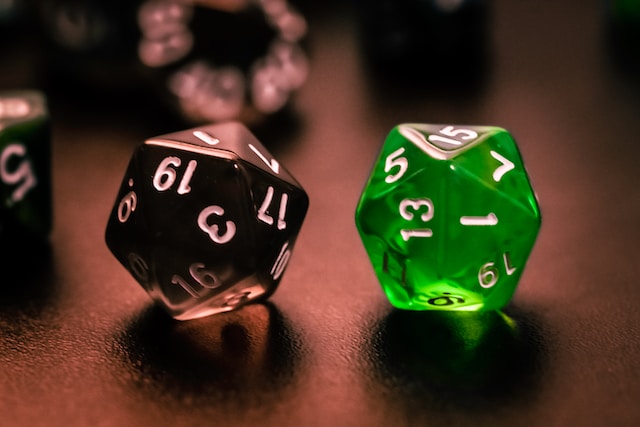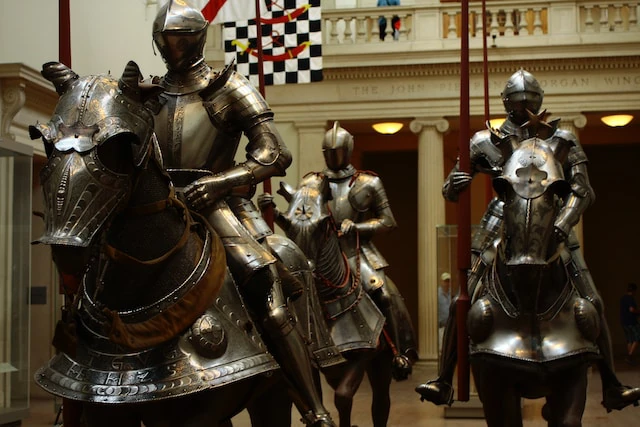Understanding 5E Hit Points Mechanics

As a Dungeons & Dragons (D&D) 5E player, understanding how hit points work is crucial. Hit points are the measure of your character’s health and vitality in the game, and they can significantly impact your gameplay experience. In this article, I’ll discuss the mechanics of hit points in D&D 5E, including what they represent, how to calculate them, and strategies for managing them during gameplay.
Key Takeaways:
-
Hit points are the measure of a character’s health and vitality in D&D 5E.
-
Calculating hit points in D&D 5E requires using a formula based on class, level, and the character’s Constitution modifier. Hit dice play a crucial role in managing hit points and recovering from damage during rest periods.
-
Temporary hit points differ from regular hit points and can impact a character’s survivability in combat. Effective hit point management requires optimizing healing, distributing damage, and making tactical decisions during gameplay.
What Are Hit Points in D&D 5E?
Hit points are a measure of a character’s health and vitality in Dungeons & Dragons 5E. They represent how much damage a character can take before falling unconscious or dying.
In combat encounters, hit points are crucial because they determine how long a character can stay in the fight and how much damage they can absorb before succumbing to their injuries. But hit points are not just important in combat; they also play a significant role in exploration and role-playing scenarios, where unexpected hazards or traps can inflict damage on characters.
Hit points are an essential aspect of character creation in D&D 5E. When creating a character, the player rolls a specific number of hit dice, which represents their character’s health and determines their starting hit points. A character’s hit points increase with each level they acquire, and their Constitution modifier also affects the final number of hit points they have.
Calculating Hit Points in 5E
Hit points are a fundamental part of any character in D&D, and understanding how to calculate them is essential to building a strong and resilient character. The formula for calculating hit points depends on several factors, including a character’s class, level, and Constitution modifier.
To calculate a character’s hit points at first level, you take the maximum hit points for your class (which is determined by rolling your hit dice and adding your Constitution modifier) and add it to your starting hit points, which is always the same number as your class’s maximum hit points. For example, if you’re playing a first level fighter with a Constitution modifier of +2, you would start with 12 hit points (10 for your maximum hit points at first level + 2 for your Constitution modifier).
As you gain levels, you’ll roll additional hit dice based on your class to determine how many more hit points you gain. To calculate the hit points gained per level, you roll your character’s hit dice, add your Constitution modifier (if positive) to the result, and then add that total to your current hit point total. If you roll your hit dice and get a number lower than your class’s average hit points, you always take the average hit point number for your class instead.
For example, if you’re playing a second level fighter with a Constitution modifier of +2 and your hit dice is 1d10, you’d roll your hit dice and add your Constitution modifier to the result. Let’s say you rolled a 5, so your total hit points gained would be 7 for that level (5 from the hit dice, + 2 from the Constitution modifier). Your new total hit points would be your current hit points plus 7.
It’s important to note that hit points can be affected by temporary bonuses or penalties during gameplay, such as magic spells or powerful attacks from enemies. Keeping track of your character’s current hit point total and calculating how many hit points you gain each level can help you make quick tactical decisions and ensure your character stays alive in intense combat encounters.
Hit Dice and Resting Mechanics

In Dungeons & Dragons 5E, hit dice play a significant role in managing hit points and recovering from damage. But what are hit dice, and how do they factor into resting mechanics in the game?
Hit dice are “dice” that represent the amount of health a character has beyond their normal hit points. Every character has a set number of hit dice based on their class, which they can spend during rests to replenish their hit points. During a short rest, a character can spend any number of their hit dice to regain hit points: each dice they spend comes up with a random number, and they add their Constitution modifier to the total. While a long rest restores a character’s maximum hit points and clears away most negative effects of combat, it only replenishes a limited number of hit dice (half the expended dice rounded down).
Healing and Damage in Combat

As a player in D&D 5E, understanding how healing and damage work in combat encounters can be critical to the success of your character. In combat, hit points are constantly in flux - players take damage from their enemies, while also dealing damage in return. As the fight goes on, characters will need to find ways to heal their hit points to remain in the battle.
There are a few key ways characters can heal their hit points during combat:
-
Spells: Many classes have access to spells that can heal hit points, such as Cure Wounds or Healing Word.
-
Potions: Players can also consume healing potions as a bonus action to restore hit points.
-
Class Abilities: Some classes have unique abilities that allow them to heal themselves or others during combat.
On the flip side, dealing damage is equally important in combat encounters. There are several mechanics for attacking and dealing damage in D&D 5E:
-
Attack Rolls: To hit an enemy, a player must roll an attack roll using a weapon or spell. The GM will then let the player know if the attack hit or missed.
-
Damage Rolls: If the attack was successful, the player will then roll the damage dice for their weapon or spell to determine how much damage they dealt to their enemy.
-
Critical Hits: If a player rolls a natural 20 on their attack roll, they score a critical hit and deal extra damage to their enemy.
-
Damage Resistance and Vulnerability: Some enemies may have damage resistance or vulnerability to certain damage types, which can impact the amount of damage dealt in combat.
Temporary Hit Points and their Effects

In D&D 5E, temporary hit points are a valuable resource that can mean the difference between life and death. Unlike regular hit points, temporary hit points are usually granted by spells, abilities, or items, and they expire after a set duration or when depleted by damage.
So, what are the effects of temporary hit points? Well, for starters, they provide a buffer between a character’s regular hit points and incoming damage. This can be especially useful in combat scenarios, as it allows the character to soak up some damage without risking permanent injury.
Temporary hit points can also synergize with healing effects, as any temporary hit points remaining after a combat encounter are converted into regular hit points. This means that a well-timed infusion of temporary hit points can potentially grant a character an extra lease on life.
It’s worth noting that temporary hit points do not stack. If a character receives temporary hit points while still under the effects of previous temporary hit points, they only gain the higher amount, not both. In addition, temporary hit points can’t be used to negate non-damage effects that still deal damage (such as the crushing despair spell).
Handling Hit Points for Non-Player Characters (NPCs)
As a dungeon master, handling hit points for NPCs may seem like a daunting task, but it’s crucial to ensure that combat encounters are challenging and fair for the players. Fortunately, the rules for determining hit points for NPCs in D&D 5E are straightforward and easy to follow.
When creating an NPC, you’ll need to determine whether they are a major or minor NPC. Major NPCs are typically boss monsters or other significant characters that play a vital role in the story, while minor NPCs are usually disposable enemies or background characters that have little impact on the narrative.
To calculate hit points for a major NPC, you’ll need to use the same process as you would for a player character. Determine the NPC’s hit dice based on their class and level, and add their Constitution modifier to the result. For minor NPCs, can quickly use a simplified formula to determine their hit points based on their challenge rating (CR).
| CR | Hit Points |
|---|---|
| 0-1 | 1 (1d6 - 1) |
| 2-3 | 2 (1d8 - 2) |
| 4-5 | 3 (1d10 - 3) |
| 6-7 | 4 (1d12 - 4) |
| 8-9 | 7 (2d6) |
| 10-11 | 9 (2d8) |
| 12-13 | 11 (3d6) |
| 14-15 | 13 (3d8) |
| 16-17 | 14 (4d6) + 2 |
| 18-19 | 18 (4d8) |
| 20 | 22 (5d8) |
Once you’ve determined an NPC’s hit points, keep track of them during combat encounters just like you would for player characters. If you want to make a particular NPC more challenging, you can increase their hit points or adjust their abilities or attacks.
Strategies for Effectively Managing Hit Points in D&D 5E
Hit point management is an essential aspect of D&D 5E gameplay. To ensure your characters survive epic battles and challenging encounters, it’s crucial to employ effective hit point management strategies. Here are some practical tips:
Optimize Healing
One key strategy for hit point management is getting the most out of your healing capabilities. Make sure to use healing spells and abilities at the right time, such as after taking significant damage or during a lull in combat. Consider using a combination of short and long rests to replenish hit points and spell slots efficiently.
Distribute Damage
Another effective strategy is distributing damage among party members. Rather than allowing one character to take on all the damage, spread it out among multiple characters to avoid any one character being knocked out of the fight. Encourage players to develop backup characters to prevent delays and keep the game moving.
Make Tactical Decisions
Good tactical decision-making is another valuable skill for hit point management. Encourage players to think creatively in combat encounters and use terrain to their advantage. Consider fighting defensively when needed and avoiding unnecessary risks that can drain hit points quickly.
Employing these strategies can help you effectively manage hit points in D&D 5E. Keep in mind that hit point management is an ongoing process, and it may take time to develop the skills and strategies necessary for optimal gameplay. So don’t give up, keep practicing, and enjoy the adventure!
Conclusion
As a player or dungeon master, understanding the mechanics of hit points is crucial to your success in D&D 5E. By comprehending how hit points work, you can make more strategic decisions, create immersive combat encounters, and ultimately have a more enjoyable gaming experience.
Remember that hit points are not just a measure of physical health but also a reflection of a character’s vitality and endurance. By managing hit points effectively, you can keep your character alive and overcome even the toughest challenges.
One way to optimize hit point management is to focus on healing and damage distribution. Whether you’re a spellcaster or a martial class, taking advantage of healing spells and abilities can help you stay alive in combat. Additionally, distributing damage among party members can prevent any one character from taking too much damage and getting knocked out.
Finally, don’t forget about the role of temporary hit points. While they may seem insignificant, they can make a big difference in a battle by increasing a character’s survivability. Remember to take advantage of spells, abilities, and other sources of temporary hit points whenever possible.
FAQ
What are hit points in D&D 5E?
Hit points in Dungeons & Dragons 5E measure a character’s health and vitality. They represent the amount of damage a character can sustain before being knocked unconscious or killed. Hit points play a crucial role in combat encounters and determine a character’s ability to stay in the fight.
How are hit points calculated in 5E?
Hit points in D&D 5E are calculated using a specific formula. To determine a character’s hit points, you would take their class’s hit dice value, add their Constitution modifier, and multiply the result by their level. This calculation ensures that characters with different classes and levels have varying amounts of hit points.
What role do hit dice play in hit point mechanics?
Hit dice are essential in managing hit points and recovering from damage in D&D 5E. Each character has a specific number and type of hit dice based on their class. Hit dice are used during short rests to restore hit points. They provide a resource for characters to heal and replenish their vitality.
How does healing and damage work in combat?
Healing and damage in combat encounters follow specific rules in D&D 5E. Characters can use healing spells, potions, or abilities to restore hit points during battles. Conversely, when dealing damage to enemies, players roll dice to determine the amount of damage inflicted. The mechanics ensure a balanced and strategic combat experience.
What are temporary hit points and how do they work?
Temporary hit points are a temporary boost to a character’s hit point pool in D&D 5E. Unlike regular hit points, temporary hit points do not stack or accumulate. Instead, the character takes the higher value when they receive temporary hit points from multiple sources. Temporary hit points provide a buffer against damage and can be gained through spells, abilities, or special effects.
How are hit points handled for non-player characters (NPCs)?
Hit points for NPCs in D&D 5E are determined by the dungeon master. Major NPCs, such as important villains or allies, usually have predetermined hit point values to make them more challenging or resilient. Minor NPCs, such as generic enemies or townsfolk, may have simplified hit point rules or be treated as having average hit points.
What are some strategies for effectively managing hit points?
To effectively manage hit points in D&D 5E, players and dungeon masters can employ various strategies. These may include optimizing healing resources, distributing damage among party members, making tactical decisions to prioritize targets or protect vulnerable characters, and utilizing spells and abilities that enhance survivability. Hit point management is a crucial aspect of combat encounters and can greatly impact the outcome of battles.